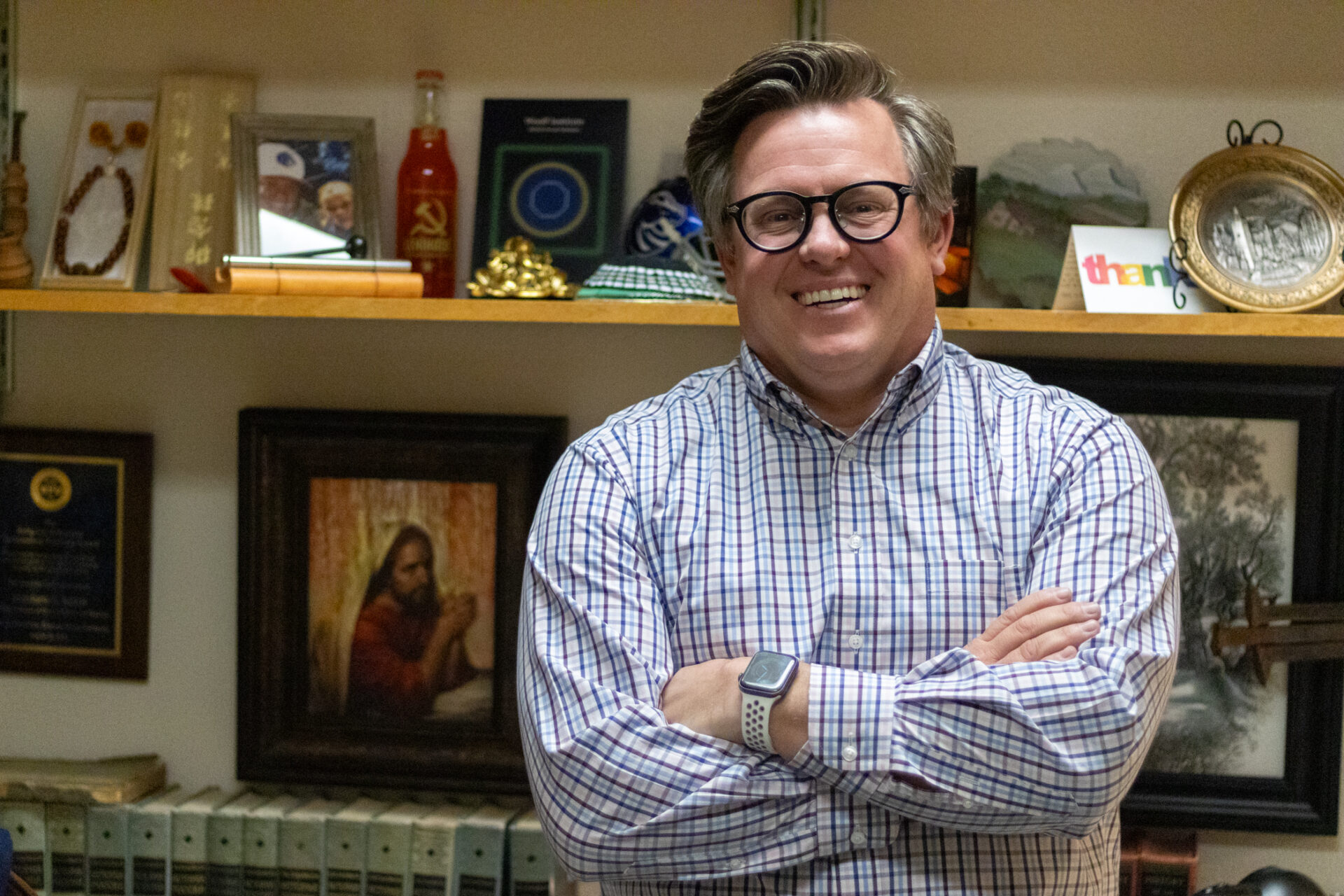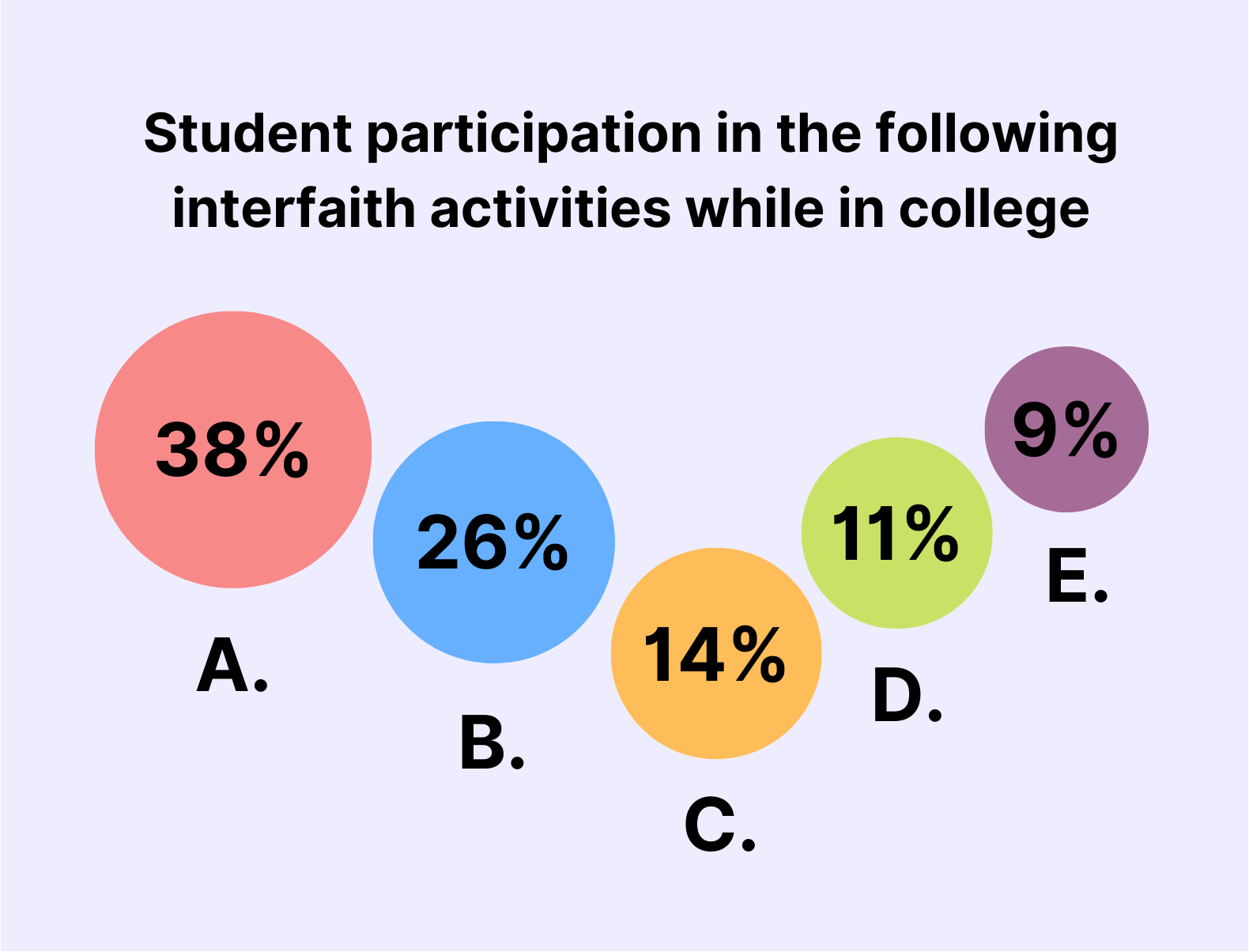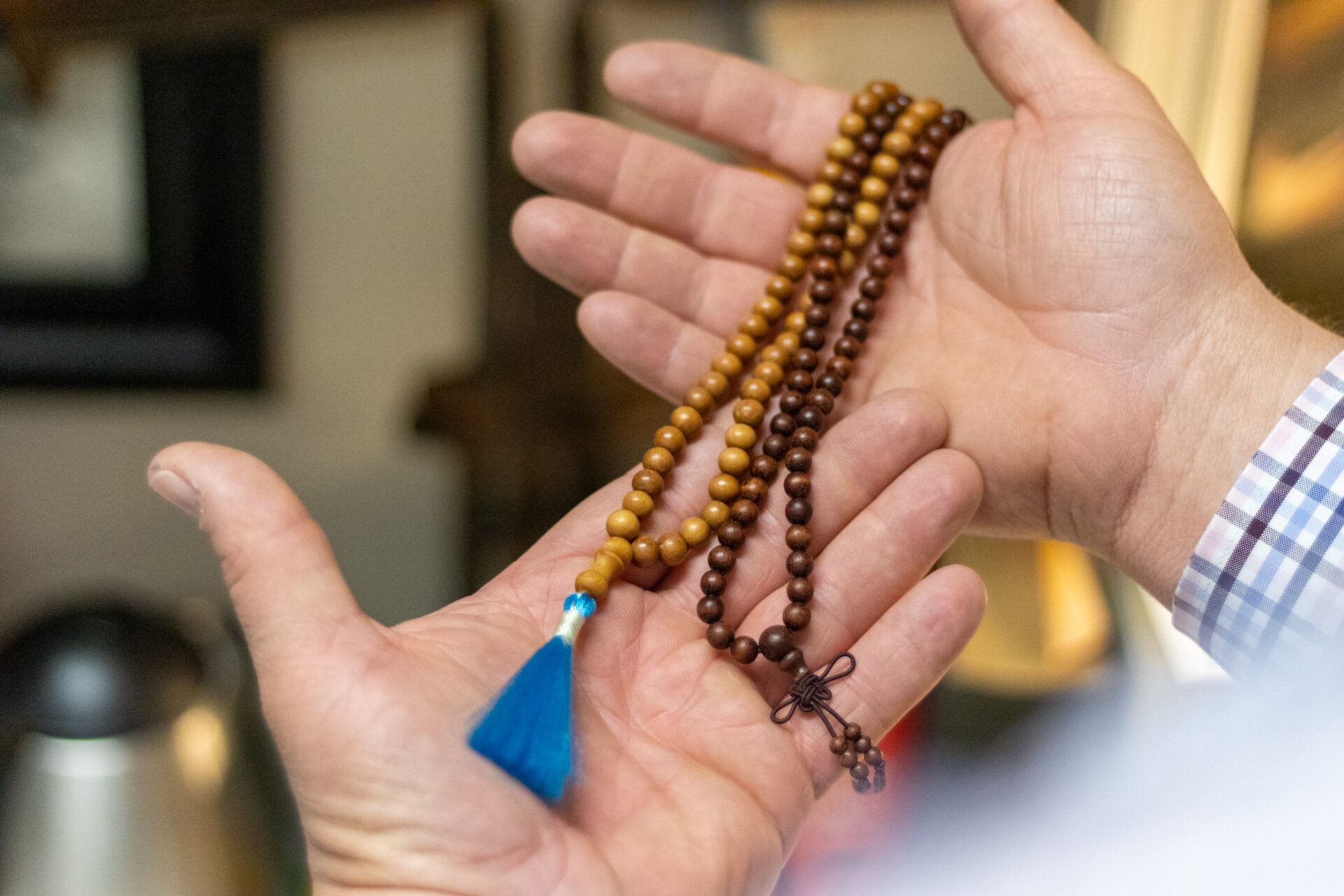
While attending high school in his hometown in northern Utah, McKay Bowman noticed all but a few of his classmates were members of The Church of Jesus Christ of Latter-day Saints.
Bowman, who was raised a member of the Church, became aware of religious differences through his own family.
“My mom is a convert to the Church, and my dad’s parents are converts. And so, in some sense (in) my extended family, there’s this element of like, existing sort of, religious difference,” Bowman said.
However, it wasn’t until Bowman joined the Interfaith Student Association at BYU that he started thinking more deeply about these religious differences.

Bowman currently serves as president of the IFSA. Since becoming involved with the association, he has gained a renewed perspective on the importance of interacting with people from other faiths, or interfaith work.
One definition of interfaith offered by researchers at Interfaith America states, “Interfaith represents the coming together of people who orient around religion differently.”
Bowman has embraced the ideology of interfaith and said there is a misconception about interfaith efforts among LDS members who think interfaith endeavors are to “help” non-LDS people. He thinks the opposite is true.
“We need the perspective of our friends from other faith traditions … They inform us … they inform me about the divine,” Bowman said.
Bowman believes BYU is fertile soil for interfaith efforts because of the religious nature and values of the institution. But for interfaith to thrive at BYU, it will require additional recognition.
“A place of study and faith might include that not everyone’s faith looks the same … but even if so, people can still come and participate in the environment of study and faith, regardless of their faith,” Bowman said.
During his year and a half of engaging with interfaith work, Bowman has witnessed firsthand the gradual growth BYU has experienced in the interfaith realm, especially from an institutional standpoint.
In early May of this year, BYU received a grant worth $166,063 from the Arthur Vining Davis Foundations for a proposal aimed at increasing religious literacy and promoting interfaith leadership across campus.
According to the AVDF’s website, the grant will “address a need on the Brigham Young University campus to build interfaith leadership capacities and religious literacy.”

Andrew Reed, chair of the Council for Interfaith Engagement and associate professor of religion, was well aware of this need on BYU campus. In response, Reed wrote the proposal and pursued the AVDF grant.
Although Reed thinks BYU does a good job helping students become leaders, he believes the nuances of interfaith leadership require a unique set of dispositions toward the world and other religious traditions that are limited at BYU.
“I’m really interested in building places for those conversations to happen but also providing students with the mentoring and the training to be able to have those conversations across religious lines,” Reed said.
Reed believes the grant will allow BYU to expand the reach of some of these spaces that already exist such as the Interfaith Student Association and to create new spaces as well.
Data indicates such interfaith spaces on college campuses are very much needed. According to a national study that surveyed about 4,000 students from across 116 institutions, 32% of respondents felt underprepared to interact with people of diverse beliefs.
In the same research, students also reported a lack of opportunities to develop interfaith skills during their college experience.

B: 26% of students enrolled in a religious course on campus specifically designed to enhance their knowledge of different religious traditions
C: 14% of students participated in an interfaith dialogue on campus
D: 11% of students participated in an interfaith action, such as having an impact on critical issues like hunger or poverty
E: 9% of students participated in interfaith or religious diversity training on campus
(Bryan Barba Salazar)
Mike MacKay, advisor for the Interfaith Student Association and member of the CIE council, said obtaining the AVDF grant was a remarkable event and possibly one of the biggest achievements in religious education at BYU.
According to MacKay, the plan to insert long-term mechanisms into the curriculum of BYU that encourage religious literacy and interfaith leadership will take place during the next three years.
MacKay is working closely with Reed to implement these programs in a way that will allow every student to have interactions with interfaith efforts and religious literacy while attending BYU.
“We want to have an impact as students are learning within their disciplines,” Reed said.
For this interfaith interaction to happen, Reed explained they need help from professors across campus in including aspects of their curriculum that supplement opportunities for students to think about how to interact with people from other religions.
“Faculty are equipped to do that well because they know the demands of their discipline … A nursing professor knows the demands that will be placed on their students when they are out working,” Reed said.

Through religious literacy, Reed believes students will be more inclined to serve communities outside of their faith and be better equipped to be thoughtful, caring, ethical leaders who know how to work across the religious divide.
For example, the CEI is currently piloting some of these mechanisms in conjunction with the PhD program for instructional psychology within the McKay School of Education. In this program, students have a year-long class focused on building an entire education system with nonprofit organizations.
For their year-long project, the CEI connected the McKay students with the Rescue Mission Evangelical Group, which focuses on homeless care. Currently, the rescue mission doesn’t have the infrastructure or the resources to increase its impact.
According to MacKay, the work of these students is twofold. Students from the McKay school will create videos that train volunteers and videos that instruct the homeless community on how to re-enter society.
“So now, you have something that they already did, and now we’re going to add into it a religious literacy interfaith element,” MacKay said.
These efforts are a good example of what the CIE has already accomplished. However, Reed said the AVDF grant will allow the council to do more than it’s ever done before in supporting the university to fulfill its mission of preparing students to go out and serve the world.
Another way grant funds will further interfaith efforts is by including religious literacy weeks each semester for the next two years, Bowman said. These religious literacy weeks would include events, panels and partnerships with local organizations.
“This is sort of like a historic moment in interfaith at BYU,” Bowman said about the grant.
Bowman is particularly excited for the interfaith work at BYU to extend beyond its walls.
Ellie Thompson, the multi-faith advisor at the William Jewett Tucker Center religious center at Dartmouth College, believes BYU has laid the interfaith groundwork by advocating for freedom of religion.
However, Thompson highlighted the need for relationships across lines of difference as the next step towards religious pluralism. She pointed to the many other worldview identities represented in Utah County which include the Islamic, Catholic, Hindu and Christian Orthodox communities.
“I think this grant is going to really enable and inspire different ideas and different ways for different BYU professors and different programs and collaborations with different staff members, maybe even in and outside of campus,” Thompson said.
MacKay is an advocate for providing opportunities for students to be more exposed to and mindful of other religious traditions right on campus, which he thinks will be very valuable in helping BYU students strengthen their own beliefs.
“The only way for their religion … to be an asset is if (they) too also value all the other religious people in the world,” MacKay said.
Thompson, who’s worked closely with Reed, also expressed her enthusiasm for what the grant will accomplish for BYU.

“I’m really, really excited for the work that BYU is doing. There are a lot of presumptions about The Church of Jesus Christ of Latter-day Saints and its members. I think the interfaith work that Professor Reed is engaging in does a lot to speak truth into that and to engage in meaningful relationships and to challenge some of those stereotypes and to really bring real relationships into the presumptions that people make about the Church,” Thompson said.
Another person optimistic about the grant is former IFSA president, Sydney Ballif. During her time as president, Ballif said they did a lot of “manure shoveling,” and now it’s time for the harvest. She is expectant and watching closely.
“I’m on the edge of my seat. I’m excited but nervous, and I also feel fulfilled,” Ballif said.
Baliff believes students have stewardship in contributing to the achievement of the full potential of the grant and, as such, they need to take part on this journey.
“This grant is going to bring speakers to campus. It’s going to bring courses to campus. It’s going to bring ideas to campus. It’s going to bring students to new places,” Ballif said.
The AVDF grant and a greater emphasis on interfaith efforts is a new frontier for BYU students, Baliff said, and will hopefully encourage better discipleship by encouraging students to associate, engage with and witness how other religious traditions worship, serve and live.
Even though there is still work to be done at a local and national level before religious pluralism is reached, researchers from Interfaith America concluded college students “are poised for success” because of their increased commitment to a positive attitude toward interfaith efforts.




